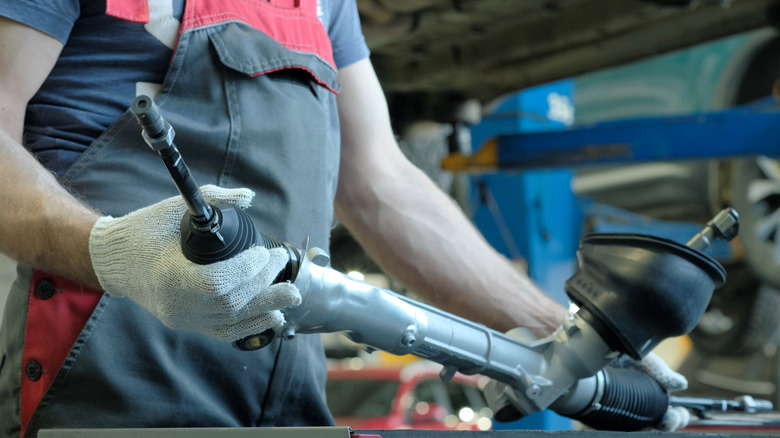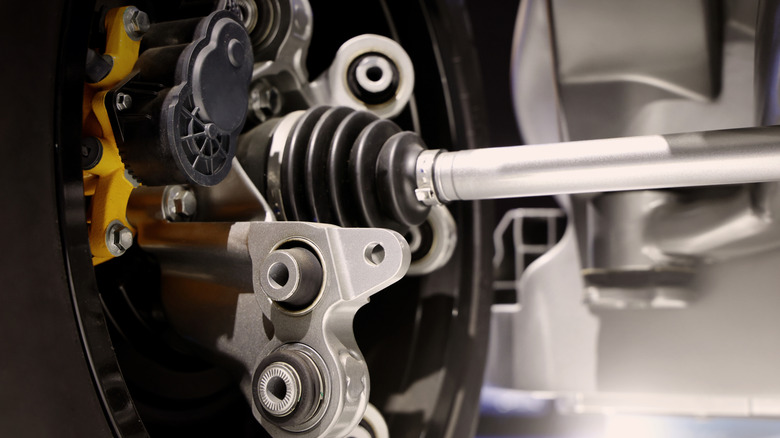Here's What Happens When A Rack And Pinion Goes Bad
Few car parts are as essential to safety and drivability as the steering setup. Most modern vehicles rely on the trusty rack-and-pinion power steering design, and like pretty much anything else, it isn't free of faults. For starters, if you notice any unusual noises paired with excessive steering wheel play, it may point to a failing rack and pinion.
Varying levels of resistance while turning from one side to the other on a smooth surface also suggests a problem with the rack. Moreover, if your power steering fluid starts leaking and is accompanied by burning oil smells, it's one more warning that something is off. Eventually, it may become difficult to keep the car going in a straight line.
The steering can become unpredictable, and you might even notice uneven tire wear. Considering how important a car's steering system is, these issues should be addressed immediately. Therefore, if your steering wanders, the wheel is vague, vibrating, or not centered, it's time to have your rack and pinion system inspected.
What makes a rack and pinion fail
There are several reasons why a rack and pinion system can fail. Wear and tear on the gears, the seals, and the bushings will degrade its overall performance. If any of the seals crack, they will start leaking fluid. This is one of the most common signs you need to service your power steering system. However, even with intact seals, contaminated fluid can damage the system from within.
The steering housing can also be cracked or bent due to impacts. Although not as common, any potential manufacturing defects and corrosion deposits can also accelerate its demise. If the hydraulic system loses inner pressure, it will affect the stability of the system and may even wear it out. Moreover, aggressive driving habits can also make a difference and add further strain.
Lack of proper and timely maintenance also plays a big role. If you fail to top up the hydraulic fluid when necessary, or you skip inspecting leaks, hoses, pumps, torn rubber boots, or worn-out parts, it can quickly destroy the system. Lastly, a rack and pinion system can also be worn out by driving over rough terrain and potholes.
Driving with a bad rack and pinion
A rack and pinion system is, on average, designed to last between five and 10 years. However, depending on your maintenance, driving habits, and wear and tear, it can last a lot shorter than that. Although it can sometimes be technically possible to drive with a bad rack and pinion system, it certainly isn't recommended because it can lead to serious safety issues and even cause accidents.
A failing rack and pinion system can cause a whole host of maneuverability issues. This can also strain other, otherwise healthy components of your car and start a cascading sequence of expensive problems. The average cost for a rack and pinion replacement is somewhere between $2,024 and $2,452 including labor and parts.
However, since ignoring car maintenance wastes money, this can double or even triple your final repair bill. Driving with a bad rack and pinion can also lead to insurance problems. Therefore, if an accident happens, and you knowingly drove your car with serious steering issues, you could be held personally liable for damage.


